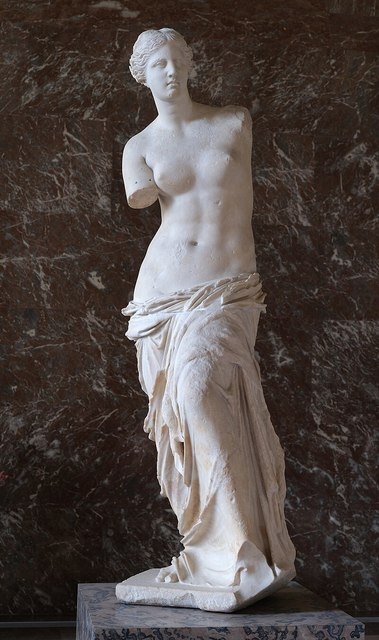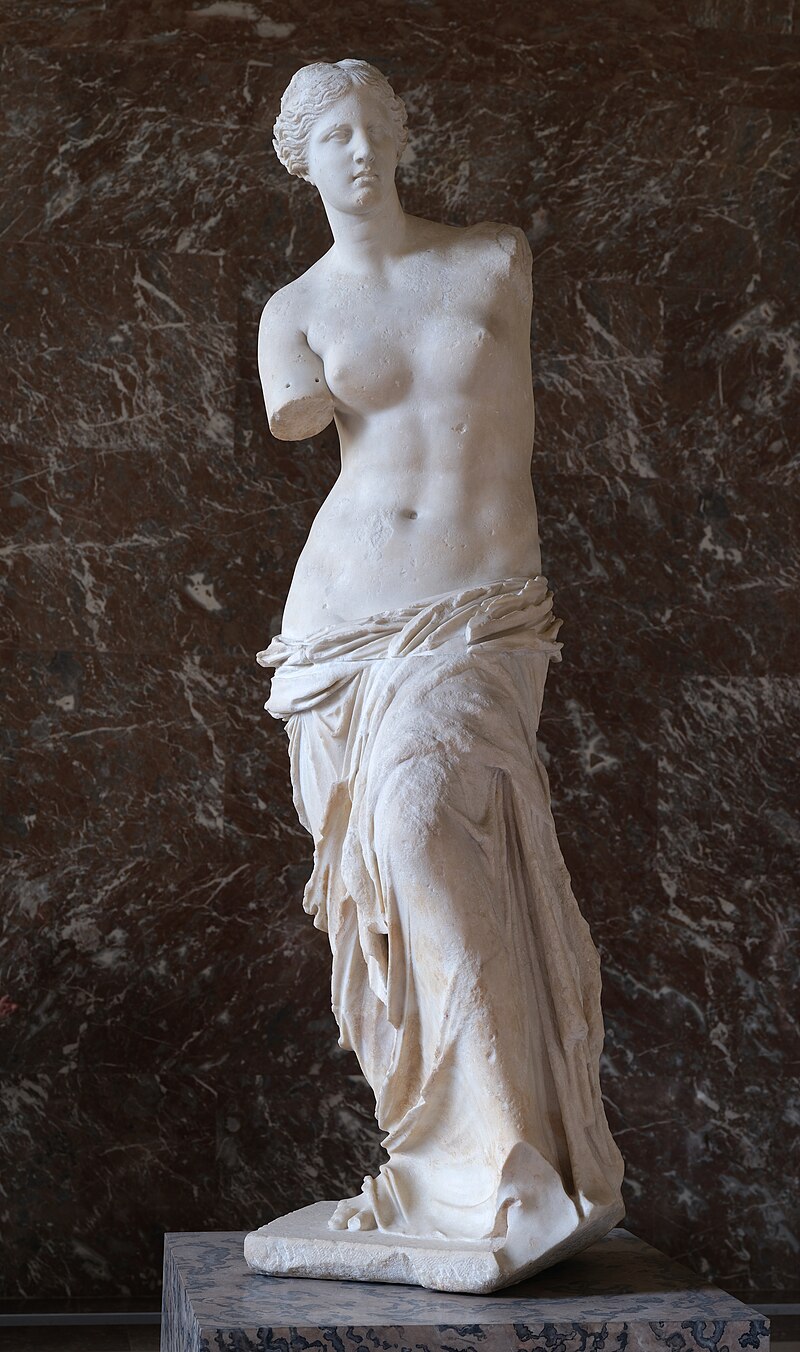Skip to main contentResource added 
Venus de Milo: Timeless Beauty

Full description
The Venus de Milo is an ancient Greek sculpture believed to have been created around the 2nd century BC by Alexandros of Antioch. Made from Parian marble, it stands approximately 6 feet tall. Discovered on the island of Melos (Milo in modern Greek) in 1820, the sculpture is widely recognized as depicting Aphrodite, the Greek goddess of love and beauty (known as Venus to the Romans). Despite missing its arms, the statue exhibits classical beauty and elegance, with detailed hair, facial features, and body contours. Today, it resides in the Louvre Museum in Paris, where it continues to captivate viewers with its enduring allure.
Comments
to view and add comments.
Annotations
No one has annotated a text with this resource yet.
- typeImage
- created on
- file formatjpg
- file size234 kB
- creatorAlexandros of Antioch
- rightsThe Louvre Museum takes care of the Venus de Milo, preserving and displaying it to the public. However, since the statue is in the public domain, the museum does not have exclusive rights over it.
- rights holderLouvre Museum in Paris


